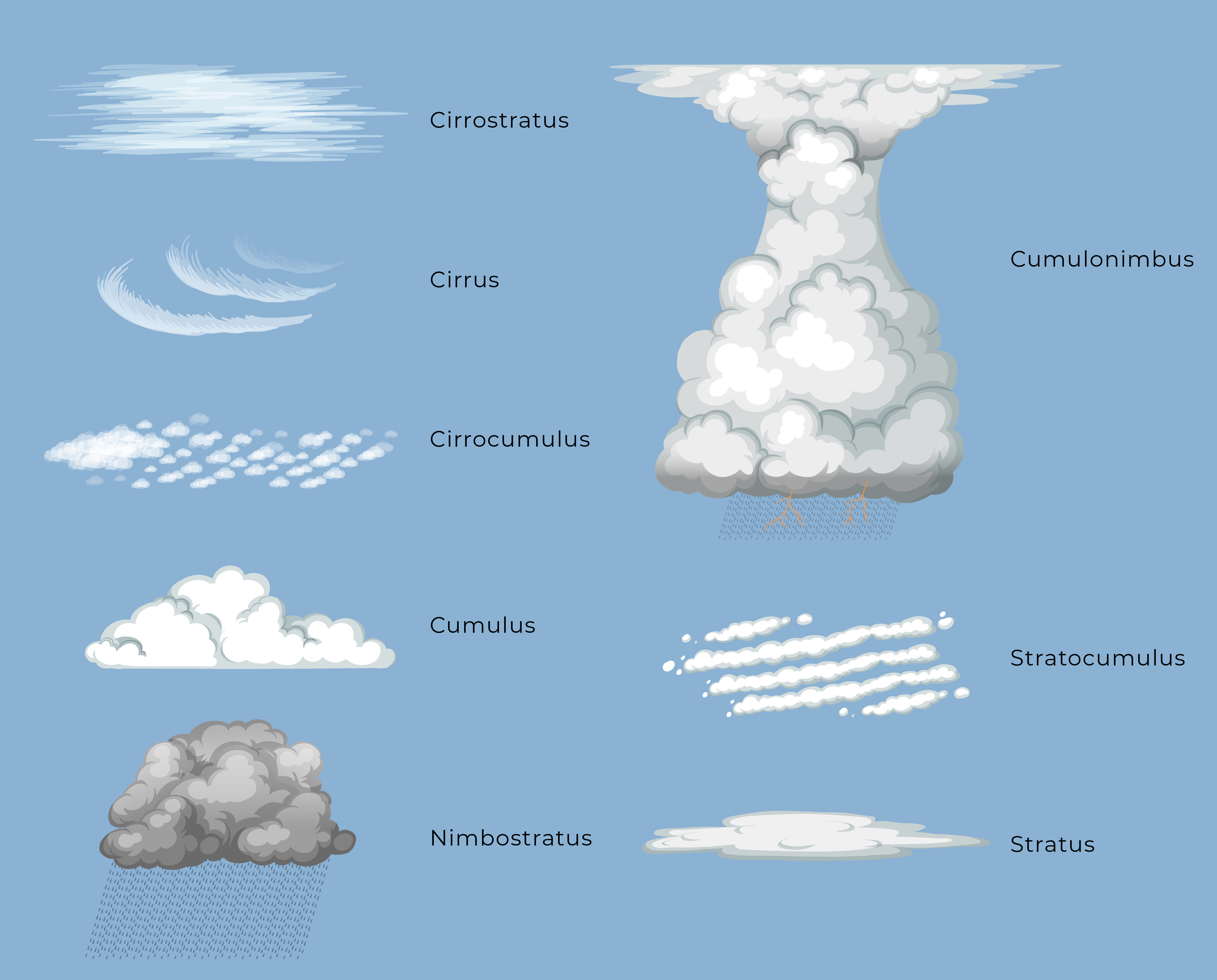
Cloud gazing: a bunny or a predictor of rain?
It's an old school way of mindfulness: cloud gazing. Lying on your back in the grass, the smell of the soil in your nose and mindlessly watching the clouds slowly drifting by. No thinking, just observing what you see. But if you know what you’re looking at, you see more than just the figure of a rabbit or a magician’s hat, but something you can actually put to use.
Clouds can be threatening, annoying, but also beautiful and enchanting, but one thing is always the case: clouds always have something to tell. With a little knowledge, you can easily predict the weather.
Clouds can be threatening, annoying, but also beautiful and enchanting, but one thing is always the case: clouds always have something to tell. With a little knowledge, you can easily predict the weather.

- Cirrus: small, wispy white clouds, high in the sky, sometimes small, sometimes long and extended. They are reminiscent of feathers or brush strokes.
- Cirrostratus: a layer of clouds very high in the sky, sometimes as high as 10 kilometers, formed by ice crystals. It is a thin cloud, so sunlight shines through it, but a ring may form around the sun. Cirrostratus often announces a change in weather: there is a chance of rain within a few hours.
- Cumulus: this is what you get when you ask a child to draw a cloud. A large, white cloud reminiscent of cotton balls. If they thin out and gradually disappear, the weather stays nice. If they get bigger and grow into the sky, that's a sign that it's going to rain.
- Stratus: low-hanging clouds that cover the entire sky. The sun does not come through, it is cloudy and gray. There is a good chance it will rain, if it is not already raining.
- Stratocumulus: a lumpy gray layer made of lots of cumulus clouds. As they level out and turn into stratus, it starts to rain. With some luck, they dissolve and the weather turns nice.
- Cirrocumulus: high in the sky, about 6 to 10 kilometers. They are formed by increasing humidity and thus can indicate rain. If you see them together with cumulus clouds, there is a chance of thunderstorms. Colloquially sometimes referred to as mackerel sky or herringbone.
- Cumulonimbus: a huge cloud that starts low and rises high into the sky. Reminiscent of an anvil. If you see this cloud, you better make sure you seek shelter: this cloud is a predictor of thunder, lightning and hard rain.
So next time, take a conscious look at what you see and who knows, you might know how to predict the weather correctly. Or just stick to looking for unusual shapes the old-fashioned way.
